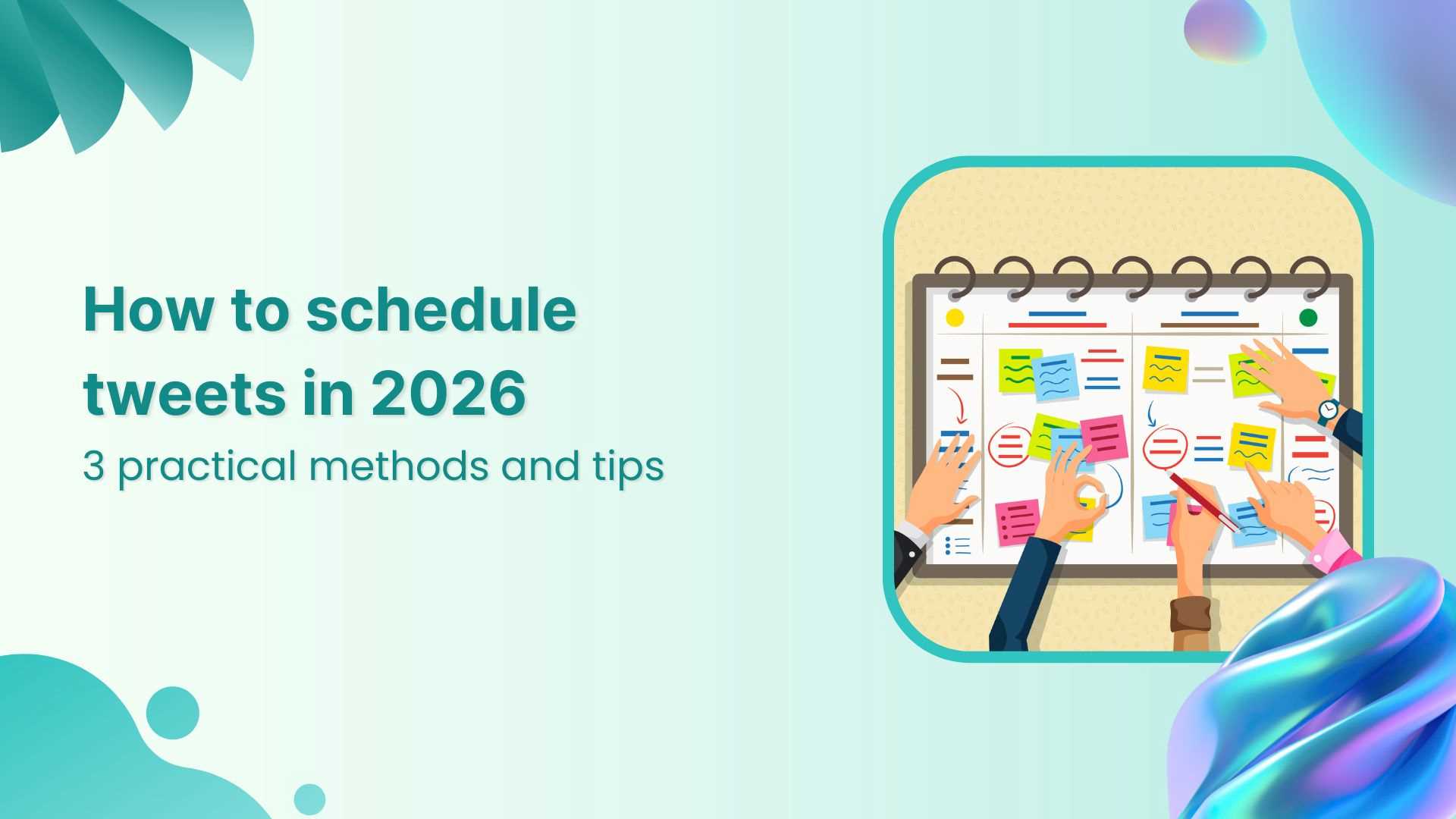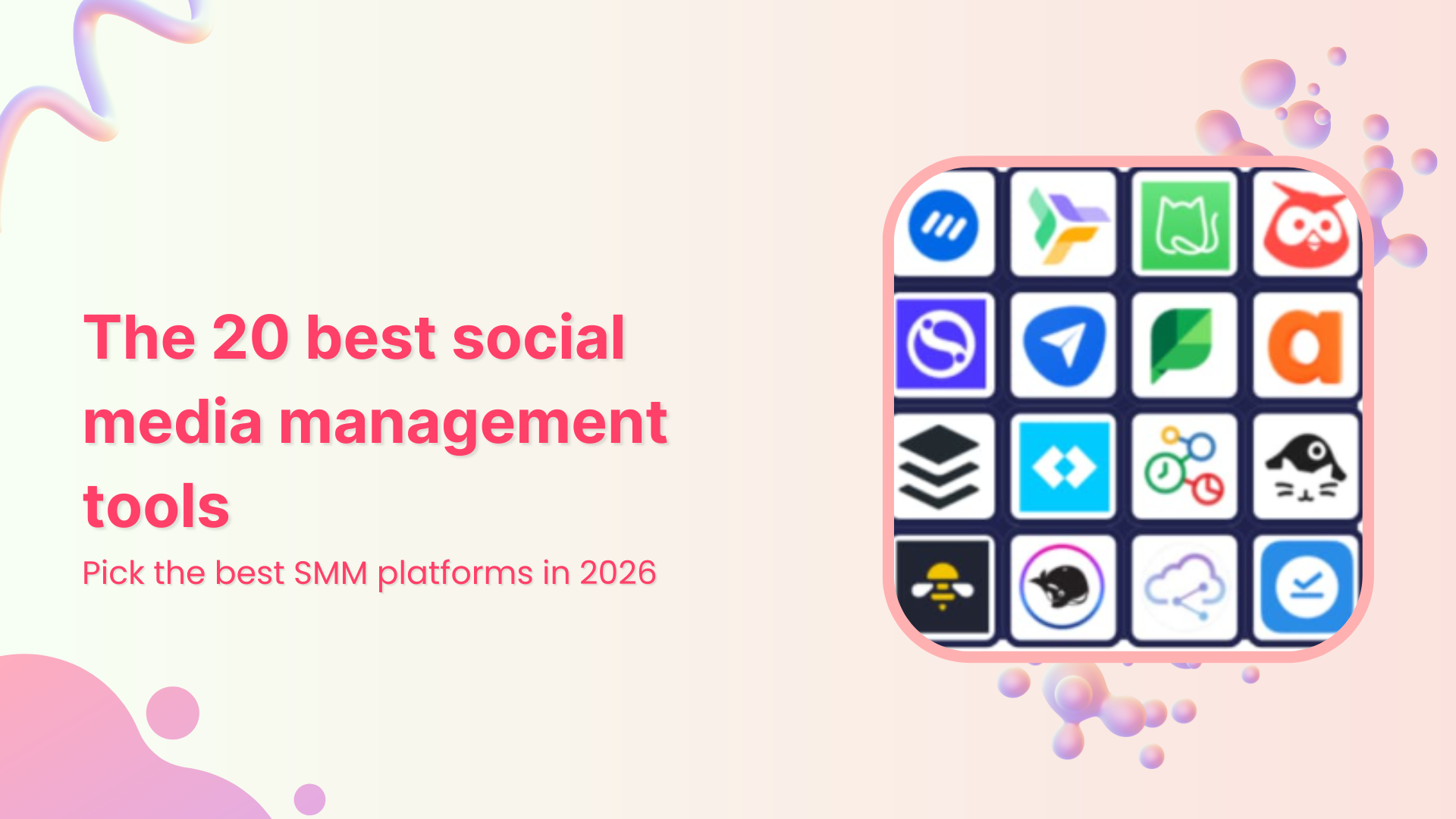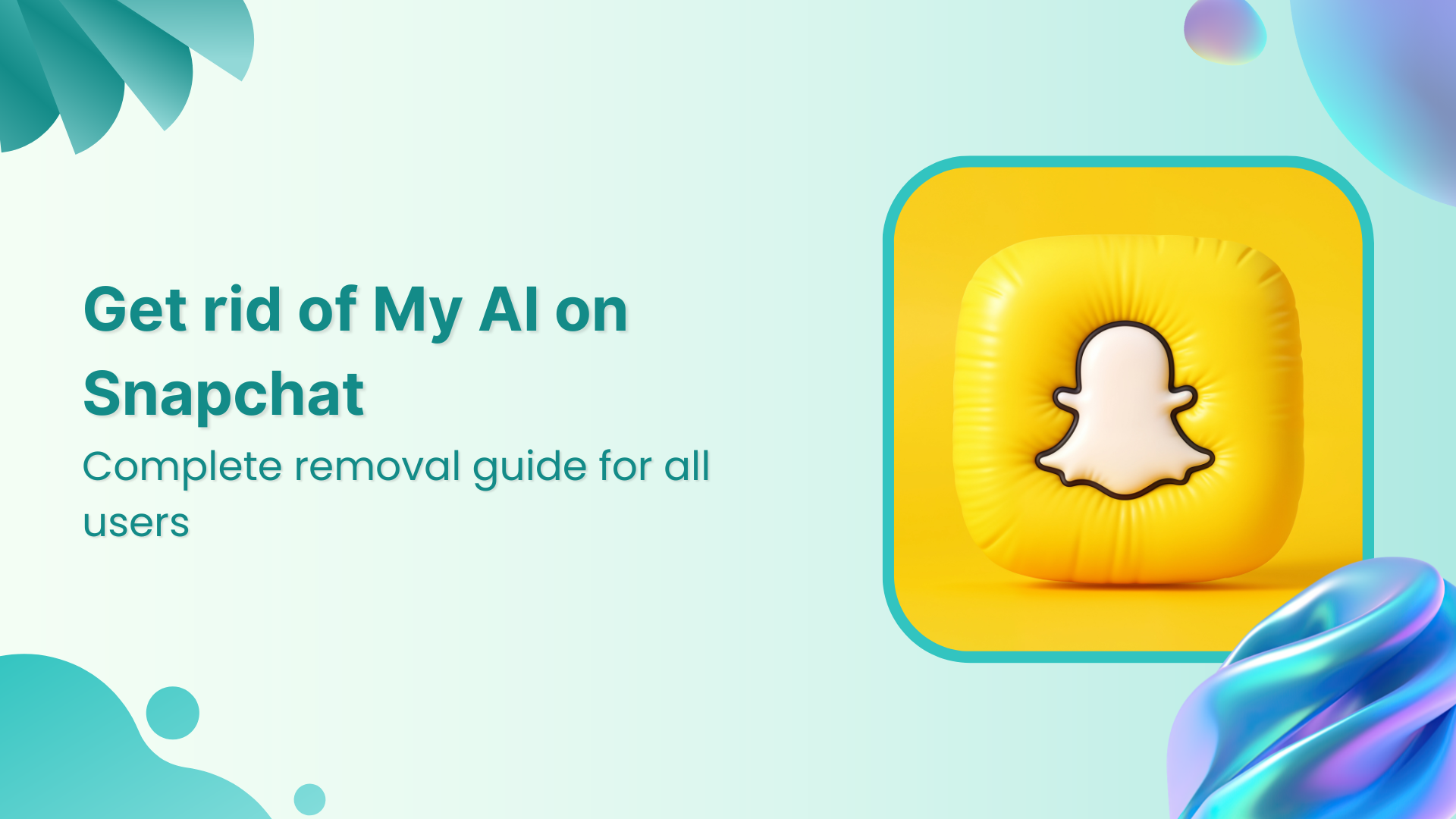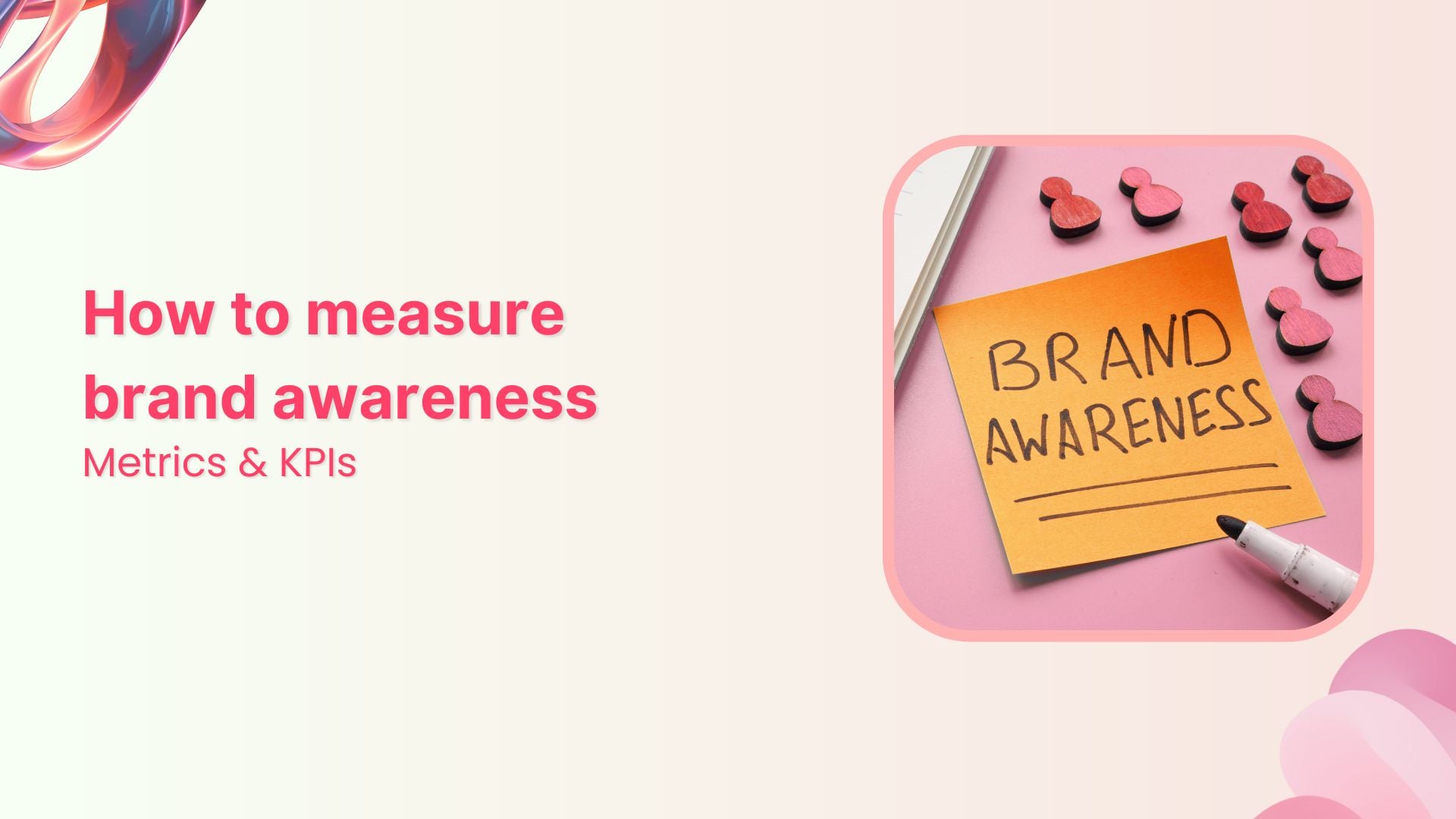Bulk-generate & schedule posts in seconds with Smart Scheduling. Try now!
Reach vs. impressions: Key differences & when to use each
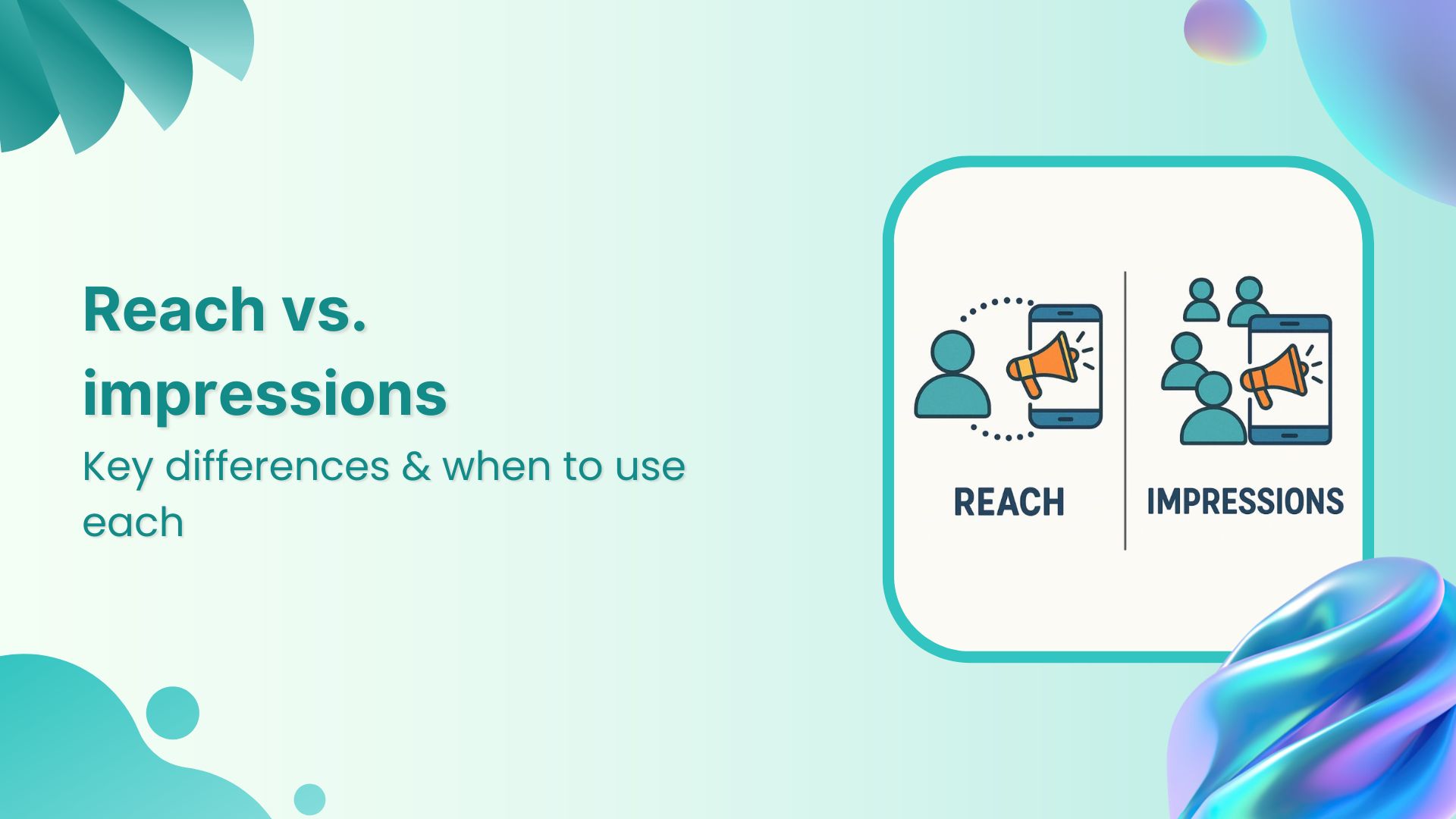
In digital marketing, reach and impressions are core metrics that help businesses gauge their content’s visibility. However, they are not the same thing. Misinterpreting these metrics can lead to a misguided strategy. Six in ten marketing leaders struggle to demonstrate impact because they focus on the wrong metrics.
Over the years, social platforms have tweaked algorithms and reporting, making it vital to understand reach vs. impressions. This article breaks down what reach and impressions mean, their differences, platform nuances, and when to prioritize each for marketing success.
What is reach in digital marketing?
Reach is the total number of unique people who see your content. In social media management, it counts each individual only once, whether they saw your post, story, or ad. Think of reach as “heads counted”: if 1,000 different users viewed your post, your reach is 1,000. This metric reflects how widely your message is spread and is closely tied to brand awareness. A high reach means your content is being exposed to a broad audience.
For example, Instagram defines reach as the number of unique accounts that saw your content on screen. Businesses track reach to understand how many potential customers have been exposed to their campaign. It’s an estimated metric on some platforms (Facebook’s analytics show reach in-platform but not via API).
Types of reach metrics
Understanding different reach classifications helps marketers interpret their data more effectively:
| Reach type | Definition | Best use case |
|---|---|---|
| Organic reach | Users who saw content without paid promotion | Measuring content quality and audience engagement |
| Paid reach | Users reached through advertising spend | Evaluating ad campaign effectiveness |
| Viral reach | Users who saw content through shares/reposts | Assessing content shareability and amplification |
| Total reach | Combined organic, paid, and viral reach | Overall campaign impact assessment |
What are impressions in digital marketing?
Impressions measure the total number of times your content is displayed, regardless of whether the same person saw it multiple times. Every appearance on a screen counts as an impression. For instance, if one user scrolls past your tweet three times, that generates three impressions (even though the reach in that case is one). Impressions indicate overall exposure and frequency. They are often higher than reach because loyal followers or targeted users might see your content multiple times.
Social platforms define impressions similarly: Facebook counts an impression whenever content from your Page enters a user’s screen, and TikTok treats video views as impressions. Unlike reach, impressions don’t tell you how many unique people saw content, but rather how busy your content was on people’s feeds. This metric is useful for understanding message reinforcement and ad frequency, since Impressions ÷ Reach = Frequency (average views per person).
Reach vs. impressions: What’s the difference?
While both metrics deal with visibility, they have distinct meanings and uses. Key differences include:
- Unique users vs. total views: Reach counts unique individuals who saw content (each person is counted once), whereas impressions count every time the content is viewed, including repeat views by the same person. Reach shows audience breadth, and impressions show how often content was seen. Understanding these social media analytics is crucial for campaign optimization.
- Relationship and frequency: Impressions divided by reach yield the frequency of exposure. A high frequency (e.g., 3+ impressions per person) means the same users see your content multiple times on average. This can signal effective repetition (for reinforcement) or indicate ad fatigue if reach is too limited.
- Upper limits: Reach cannot exceed your potential audience size, whereas impressions can be much higher than reach. For example, one person seeing a post 5 times results in reach = 1 and impressions = 5. Thus, impressions ≥ reach in all cases.
- Use cases: Reach is ideal for gauging brand awareness – it tells you how many unique people you’ve reached. Impressions gauge total exposure and repetition, useful for brand recall campaigns. Neither metric is “better” universally; the right focus depends on your goals.
- Interpreting High/Low Values: A campaign with high impressions but low reach means the content is circulating to the same small audience repeatedly. Conversely, high reach but low engagement could mean many saw it, but the content didn’t inspire action. These patterns inform whether you need to broaden your audience or improve content relevance.
- Marketing Impact: Reach reflects audience penetration – how many people in your target pool you have touched. Impressions reflect message saturation – how visible your content was in total. For example, 10,000 reach with 10,000 impressions (frequency = 1) indicates broad one-time exposure, whereas 2,000 reach with 10,000 impressions (frequency = 5) indicates a narrower audience seeing it frequently.
Platform-specific reach vs. impressions benchmarks
Different platforms have varying performance standards for reach and impressions:
| Platform | Average Organic Reach Rate | Typical Impression-to-Reach Ratio | Industry Benchmark |
|---|---|---|---|
| 5.2% of followers | 1.2:1 | 1–6% engagement rate | |
| 8.8% of followers | 1.4:1 | 1–3% engagement rate | |
| 2.1% of followers | 1.1:1 | 0.5–2% engagement rate | |
| Twitter/X | 3.7% of followers | 2.1:1 | 0.5–1% engagement rate |
| TikTok | 17.5% of followers | 3.2:1 | 3–9% engagement rate |
Reach vs impressions on social media platforms
Each social platform defines and uses reach and impressions in its own way. Below, we compare how major networks handle these metrics and recent trends in their analytics.
Facebook reach vs. impressions
On Facebook, reach refers to the estimated number of unique people who viewed content from or about your Page. Impressions, however, count the total instances the content was displayed. For instance, if a user sees your post in their News Feed and again via a friend’s share, this yields two impressions but just one reach. Facebook Insights tracks both metrics and categorizes them into organic and paid reach/impressions.
A key trend is declining organic reach, with average posts reaching about 6.4% of followers organically due to algorithm shifts. Consequently, businesses often invest in paid methods to enhance visibility. Typically, impressions exceed reach because loyal followers or targeted audiences frequently view content multiple times.
Marketers should analyse both: limited reach signals restricted audience penetration, whereas a high impressions-to-reach ratio indicates content repeatedly reaching the same users, potentially reinforcing messaging or causing viewer fatigue.

Alt Tag: ContentStudio Facebook analytics dashboard showing reach, impressions, and engagement metrics.
Instagram reach vs. impressions
Instagram defines reach as the number of unique accounts viewing a post or story, while impressions represent total content views. In May 2025, Instagram replaced “impressions” with “views,” although this still tracks total displays similarly. Businesses can monitor these metrics in-app across varying periods and demographics.
Generally, Instagram offers higher reach percentages compared to Facebook, approximately 3.5% versus 1.2%. However, Instagram algorithmic changes led to a roughly 12% year-over-year decline in organic reach by 2025. Typically, Instagram impressions outpace reach since engaging content often prompts multiple views or further sharing, especially via Explore pages or hashtags. Thus, marketers prioritize reach for audience awareness and impressions (or views) for evaluating content virality.
For instance, Instagram Reels frequently achieve millions of impressions globally, greatly surpassing follower counts, showcasing significant potential for expanding unique reach and overall visibility.

Alt text: ContentStudio Instagram analytics dashboard showing post reach, impressions, engagement, and growth.
Twitter (X) reach vs. impressions
On X (formerly Twitter), impressions represent the main visibility metric, counting every instance a tweet appears in feeds, search results, or profiles. X doesn’t provide a reach metric, so marketers infer audience size indirectly from impressions. In late 2022, Twitter publicly displayed tweet impressions alongside likes and retweets.
According to Elon Musk, over 90% of users consume tweets without actively engaging, highlighting a sizeable passive audience. Thus, impressions frequently surpass engagements significantly. Businesses assess impressions over 28-day intervals via Twitter analytics, tracking visibility and engagement rates. A high impression count implies broad visibility, vital for brand awareness and content evaluation.
For example, 50,000 tweet impressions suggest substantial unique viewership, though some repeat views occur. Consequently, maximizing impressions through retweets or viral content and analysing the engagement ratio is essential for marketers aiming to understand audience impact and growth on the platform.
LinkedIn reach vs. impressions
LinkedIn primarily measures content visibility through impressions, indicating the total times a post appears in user feeds or elsewhere on the platform. LinkedIn doesn’t publicly disclose a reach metric for organic content, leaving impressions as the main visibility gauge. Hence, if your post garners 5,000 impressions, this represents total displays without indicating unique viewer count.
LinkedIn analytics additionally reveal audience demographics by company, job title, and location, offering insights into viewer composition. Profile views metrics exist separately from content reach. LinkedIn increasingly favours personal profiles’ organic reach over company pages. Without direct reach metrics, marketers assess effectiveness through impressions and engagement rates, implying audience resonance.
To indirectly boost reach, businesses aim for shareable, engaging content, enhancing impressions by reaching secondary networks through shares. Thus, LinkedIn marketers leverage impressions to evaluate content visibility and indirectly estimate reach through engagement and network sharing patterns.

TikTok reach vs. impressions
TikTok distinguishes reach as the number of unique users viewing content, tracked as “Reached Audience” in analytics, whereas impressions correspond to “Total Video Views”—the aggregate views regardless of repeat watchers. For instance, one viewer watching a video three times counts as one unique reach but three impressions.
TikTok’s algorithm widely distributes videos, enabling massive impressions and extended reach beyond follower bases. In 2023, personal creator accounts averaged 30,145 views per video compared to business accounts’ 17,563, reflecting immense potential for content visibility. TikTok can swiftly generate extensive reach, with single viral videos potentially reaching millions globally, vastly amplifying brand exposure.
Businesses monitor views (impressions) to measure content virality and track “audience reached” to gauge actual unique exposure. Effective TikTok strategies involve engaging storytelling and leveraging trending content, significantly boosting unique reach and cumulative impressions, fostering visibility and audience growth.

When to focus on reach vs. impressions
Whether a business should prioritize reach or impressions depends on the campaign’s goals and the marketing scenario. Below are common scenarios explaining when to focus on reach versus impressions:
- Building brand awareness (Focus on reach)
When your goal is brand awareness, reach is essential, as it measures how many unique individuals see your content. High reach ensures your message reaches new audiences effectively. For instance, brand awareness campaigns on social media optimize for maximum unique viewers, especially crucial when entering new markets or targeting new demographics.
Businesses focusing on reach avoid repeatedly reaching the same users and prioritize expanding their audience base. Monitoring reach accurately reflects the true audience size exposed to your content. If reach numbers are low, consider broadening your targeting strategy or exploring additional marketing channels to enhance overall visibility.
- New product launch or market entry (Focus on reach)
For new product launches or entering new markets, prioritize reach to introduce your product broadly to potential customers. Utilizing reach-based objectives, such as those in Meta Ads Manager, ensures the announcement isn’t confined narrowly.
Initially, maximizing unique viewers is vital to generate product awareness effectively. This early exposure can also facilitate word-of-mouth marketing, as more viewers discuss or share your product. Reach thus becomes critical for assessing initial market penetration and buzz, clearly indicating the number of distinct individuals exposed to your new offering. Prioritizing reach at launch helps establish strong initial awareness and amplifies visibility through shared interactions.
- Retargeting and nurture campaigns (Focus on impressions)
Retargeting campaigns or nurturing existing customers necessitate emphasizing impressions to reinforce your message. The core idea is that frequent exposure nudges the familiar audience toward action, such as finalizing a purchase after abandoning their cart. High frequency of impressions per user ensures sustained visibility and keeps your brand prominent in the audience’s mind.
Metrics like frequency (impressions per unique user) and total impressions are essential. Insufficient impressions mean fewer touchpoints, potentially undermining campaign effectiveness. Thus, nurturing campaigns should prioritize maximizing impressions, ensuring messages resonate through repeated viewing, ultimately driving users toward desired conversions or ongoing engagement.
- Promotional or seasonal sales (Focus on impressions)
Time-sensitive promotions, like Black friday or seasonal sales, require prioritizing impressions to ensure effective message reinforcement. Multiple exposures to the same user enhance urgency and memorability. For example, displaying a promotional ad several times within a short period significantly boosts customer action compared to a single exposure.
High impression frequency (e.g., five times per user) often proves beneficial for seasonal campaigns, ensuring the message penetrates effectively amidst competing promotions. Businesses should monitor impressions closely, adjusting budgets or targeting strategies if impressions are insufficient. Emphasizing repeated visibility to a targeted audience can yield higher conversions and enhanced promotional effectiveness.
- Mature brands with saturated audience (Refine with impressions)
Mature brands with established audiences benefit from shifting focus to impressions, deepening engagement among existing followers rather than solely expanding reach. High impressions help maintain brand recall and prominence among already reached users.
For instance, global brands like Coca-Cola prioritize impression frequency to reinforce their established messaging continually. When reach has plateaued, businesses can enhance impressions through richer, varied content formats like videos and stories or strategic cross-posting across platforms. Optimizing impressions ensures sustained visibility and active audience engagement, maximizing marketing ROI by reinforcing brand presence and maintaining strong relationships with existing, familiar audiences rather than solely seeking new viewers.
How to improve both reach & impressions
Driving reach and impressions requires strategic content and tactics. Here are 5 effective methods to help businesses enhance both metrics:
- Leverage user-generated content (UGC) & sharing
Encouraging user-generated content (reviews, videos, photos) boosts reach and impressions. Featuring customer-created content builds trust, motivating further sharing within their networks. Companies using UGC achieve significantly higher engagement, around 50% more compared to traditional posts.
Higher engagement prompts social algorithms to increase content visibility, enhancing reach and multiplying impressions. Brands can initiate UGC through campaigns inviting customers to share stories or hashtags. Authentic UGC attracts additional views and shares, significantly expanding reach while simultaneously generating repeated impressions through interactions from followers and their connections.
- Partner with influencers or industry experts
Influencer partnerships rapidly amplify reach and impressions, leveraging their dedicated follower bases to access new audiences. Collaborating with influencers introduces your brand to previously unreachable viewers, significantly increasing reach. Influencer-created content often attracts high impressions due to loyal followers repeatedly viewing or interacting, further promoted by social algorithms favouring engagement.
With influencer marketing budgets rising, selecting influencers aligned with your target audience is essential. Monitor reach and impressions from influencer posts to measure effectiveness. Successful collaborations boost visibility, credibility, and audience engagement, creating sustained impressions through ongoing interactions.
- Optimize posting times and frequency
Effective timing and consistent posting significantly impact reach and impressions. Sharing content when your audience is most active maximizes visibility (reach) and repeated appearances in feeds (impressions). Social algorithms favour fresh, quickly engaged content, amplifying exposure further. Studies indicate that brands posting at optimal times experience higher engagement, expanded distribution, and visibility.
Maintain consistent posting frequency for steady impression growth and prevent stagnating reach. Balance is key—frequent posting without audience fatigue. Analytics tools help identify optimal posting schedules, ensuring content reaches users effectively, increasing both unique reach and overall impressions consistently over time.
- Use social SEO and hashtags for discoverability
Social SEO using keywords, hashtags, and trending topics, enhances content discoverability, boosting reach and impressions. Platforms like Instagram and LinkedIn have improved search functionalities, allowing keyword-optimized content to surface broadly. Hashtags enable content to appear in relevant searches beyond current followers, significantly expanding reach.
For example, Instagram captions with targeted hashtags attract new viewers searching specific topics. On TikTok, trending keywords and sounds increase visibility on “For You” pages. Effective social SEO ensures broader discovery, increasing unique reach and subsequent impressions as newly reached viewers engage with, share, and repeatedly interact with content.
- Create engaging content and encourage interaction
Highly engaging content naturally boosts both reach and impressions. Social algorithms prioritize content with strong engagement (likes, shares, comments), extending visibility to wider audiences. Including clear calls-to-action, questions, or prompts encourages user interaction, multiplying impressions through repeated appearances in feeds. Shareable content significantly expands reach, attracting new viewers through follower networks.
Businesses actively responding to audience interactions build community loyalty, encouraging consistent viewing and sharing, enhancing reach and impressions. Quality, resonant content initiates a positive feedback loop: increased engagement triggers algorithmic visibility boosts, growing impressions while consistently expanding unique audience reach.
- Advanced strategies for reach and impression optimization
Beyond basic tactics, sophisticated marketers employ these advanced strategies:
| Strategy | Impact on Reach | Impact on Impressions | Implementation Difficulty |
|---|---|---|---|
| Cross-platform content syndication | High | Medium | Medium |
| AI-powered content personalization | Medium | High | High |
| Community building and engagement pods | Medium | High | Medium |
| Trending topic hijacking | High | High | Low |
| Interactive content (polls, Q&As, live streams) | Medium | High | Low |
| Strategic hashtag clustering | High | Medium | Medium |
Tools to track reach and impressions
Tracking reach and impressions across channels is much easier with the right tools. Here are four powerful tools that help businesses monitor these metrics:
1. ContentStudio
ContentStudio stands out as the premier social media management platform, excelling notably in tracking reach and impressions. Offering a unified dashboard, businesses effortlessly monitor comprehensive analytics across multiple social networks.
Its intuitive analytics module presents a consolidated, cross-platform view of your total reach and impressions, simplifying the identification of top-performing channels.
ContentStudio also facilitates competitor benchmarking, automated report scheduling, and robust content planning features, significantly streamlining social media strategy execution. This makes it ideal for marketers requiring precise insights and efficiency.

Key analytics features:
- Cross-platform reach and impressions reports
- Platform-specific breakdowns of reach and impressions
- Competitor benchmarking
- Automated report scheduling
2. Hootsuite
Hootsuite, a widely used social media management tool, provides comprehensive analytics to monitor reach and impressions across major platforms like Facebook, Instagram, Twitter/X, LinkedIn, and TikTok. Its customizable dashboard aggregates these metrics for easy comparison, differentiating clearly between paid and organic performance.
Users benefit from features like customizable report generation, benchmarking capabilities, and recommendations for optimal posting times based on historical data. This centralization allows businesses to efficiently track visibility trends and improvements in impressions or reach, providing straightforward, actionable insights within a user-friendly reporting environment.

Key analytics features:
- Aggregated multi-platform reach/impressions tracking
- Paid versus organic reach/impressions analysis
- Customizable report generation
- Optimal posting time recommendations
3. Sprout Social
Sprout Social offers premium analytics, renowned for detailed reports tracking reach and impressions across platforms such as Facebook, Instagram, LinkedIn, and Twitter. Its visually appealing dashboard quickly highlights impressions and reach within comprehensive performance reports. Sprout’s analytics include presentation-ready visuals clarifying reach versus impressions, aiding stakeholder understanding.
Additionally, it integrates engagement data effectively, offering insight into content performance and audience response patterns. Features such as automated report scheduling and detailed trend analysis support informed decision-making, making Sprout Social ideal for businesses seeking in-depth insights to optimize audience growth and content visibility effectively.
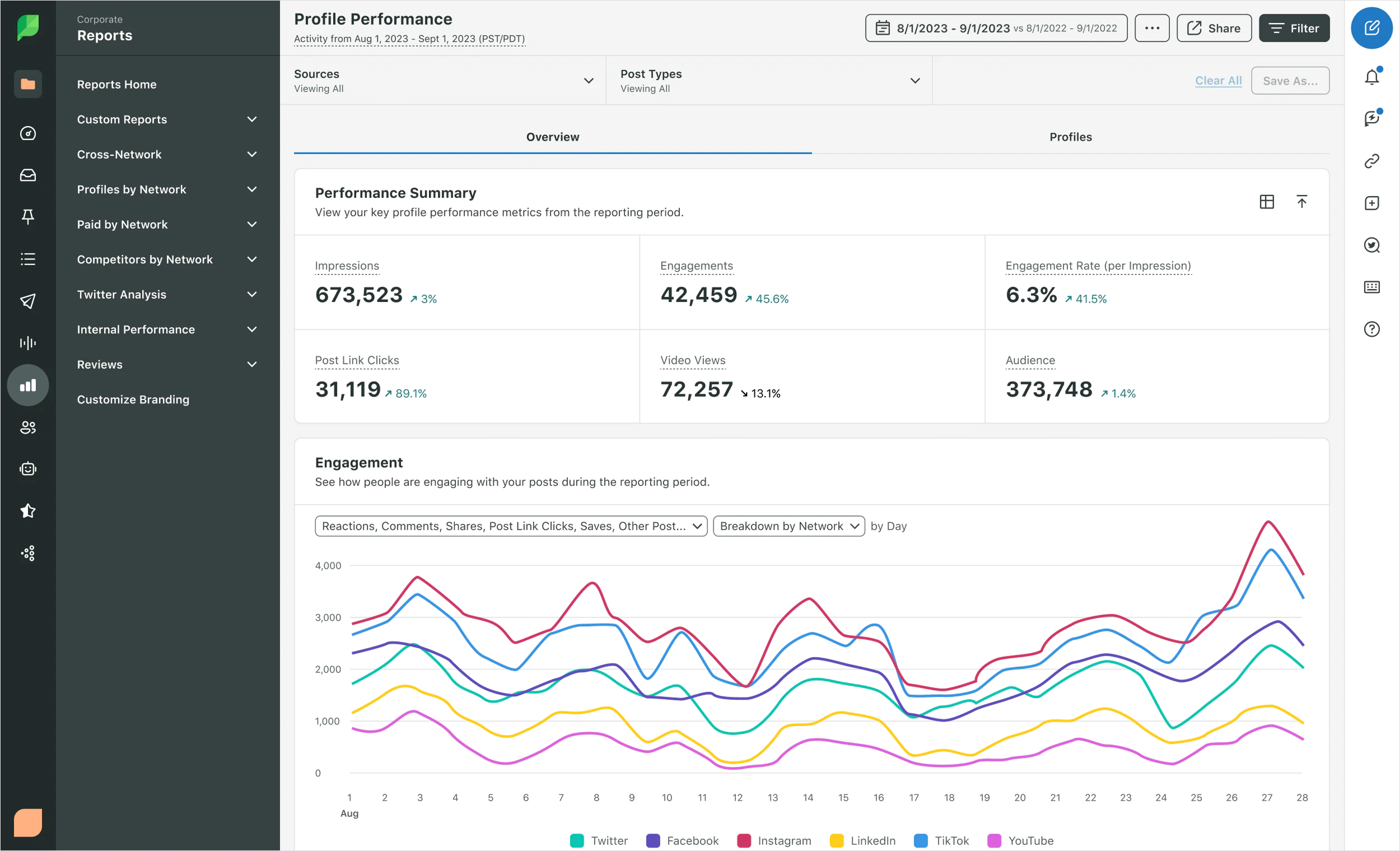
Key analytics features:
- Reach and impressions visual reporting
- Engagement integration
- Trend analysis over time
- Automated scheduled reports
3. Buffer (Analyze)
Buffer Analyze complements Buffer’s simple scheduling tools with straightforward analytics tracking reach and impressions across Facebook, Instagram, Twitter, and LinkedIn. Its user-friendly interface displays aggregated and post-specific reach and impressions, differentiating organic from boosted content performance. Buffer’s analytics offer accessible data export options and easy identification of top-performing content based on impressions.
Additionally, insightful hashtag performance analysis helps businesses refine strategies for increased reach. Buffer Analyze effectively serves small teams needing clear, concise insights into content visibility trends and performance, significantly enhancing content strategy with actionable data without overwhelming complexity.
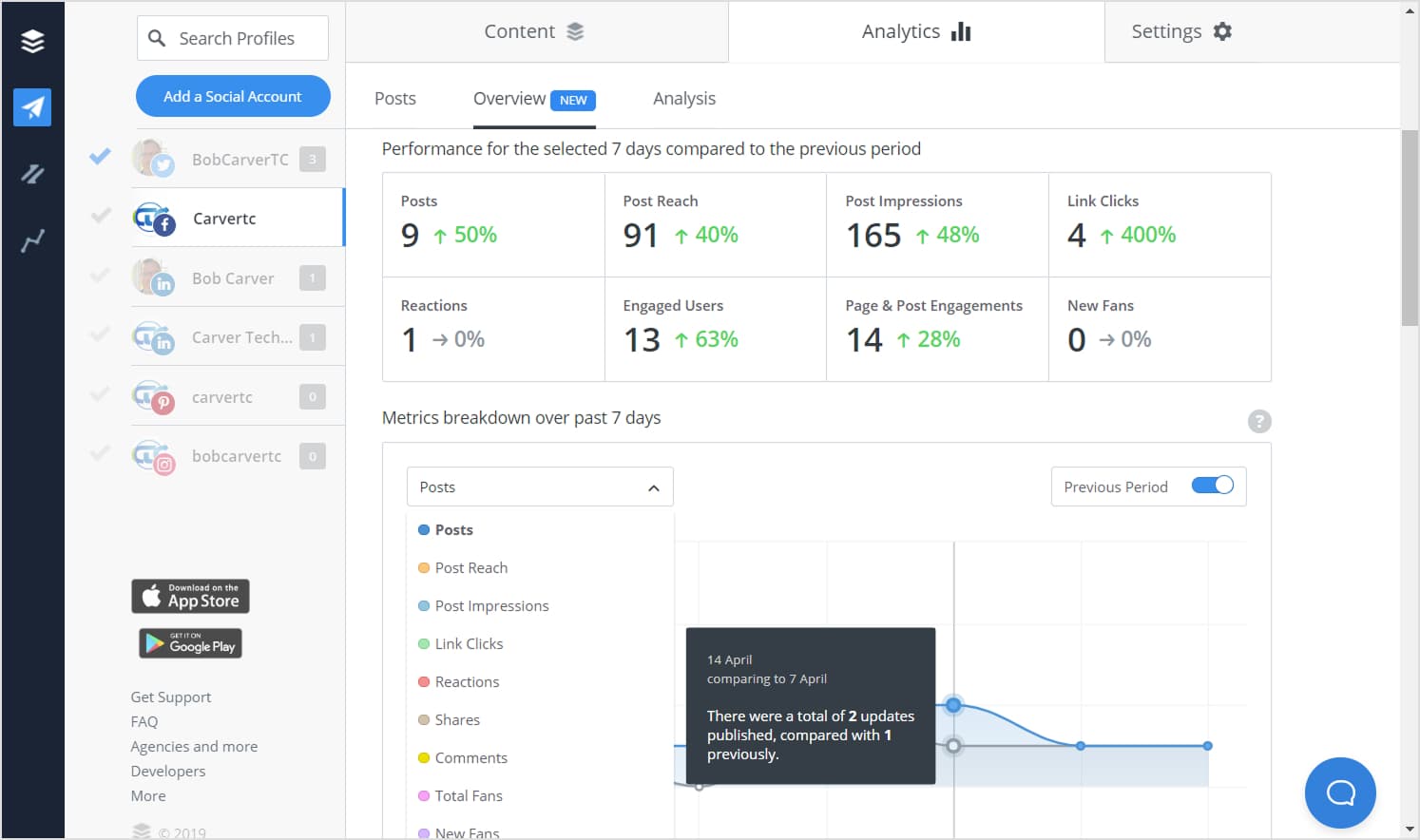
Key analytics features:
- Aggregated and individual post reach/impressions
- Organic versus boosted content analysis
- Hashtag performance insights
- Exportable performance data
The easiest way to manage and grow your social channels.
Try ContentStudio for FREE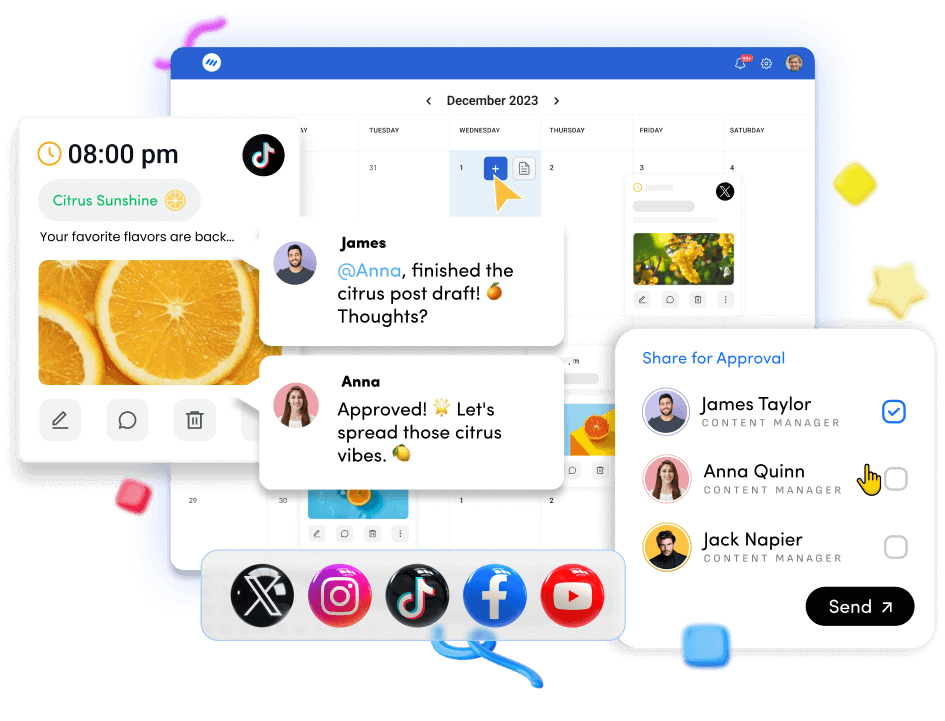
Conclusion
Reach and impressions are complementary metrics that provide a full view of your marketing visibility. In the context of declining organic reach and shifting algorithms, understanding both is essential. Reach shows how many unique people saw your content, while impressions show how often it was viewed.
Use reach to build awareness and impressions to reinforce messaging. Don’t treat them as competing metrics use them together to form a clearer picture of impact. When managed correctly, reach and impressions significantly strengthen marketing outcomes and support smarter content decisions.
Frequently asked questions
Is reach better than impressions?
Reach and impressions serve different purposes. Reach measures unique viewers; impressions count total views, including repeats. Use reach for awareness and impressions for reinforcement. High reach with low impressions may mean limited exposure depth. High impressions with low reach can suggest oversaturation.
Neither is inherently better; effectiveness depends on campaign goals. For awareness, focus on reach. For retargeting or brand recall, impressions matter more. The best results often come from using both metrics together to balance visibility and repetition.
Is CPM based on reach or impressions?
Standard CPM (Cost Per Mille) reflects the cost per 1,000 impressions, not reach. For example, a $5 CPM means you pay $5 for 1,000 ad views. Some platforms offer CPM variants based on reach (e.g., CPM-R), but these are less common. CPM tells you cost efficiency for views, not unique users. Marketers often pair CPM with frequency data to understand how impressions are distributed. Unless specified otherwise, CPM metrics are impressions-based, not reach-based.
What is the difference between impressions and views?
Impressions and views are often similar but not always identical. Impressions occur when content appears on screen, even briefly. Views typically indicate a user watched content for a minimum time, like 2–3 seconds on video platforms. For example, a TikTok video may get an impression when shown, but a view only after some playback. Instagram now labels video views instead of impressions. Impressions reflect exposure volume; views suggest deeper content consumption. Platforms vary in how they define these terms.
What is the difference between reach and engagement?
Reach refers to how many unique users saw your content. Engagement shows how people interacted—likes, shares, comments, or clicks. Reach is passive; engagement is active. High reach with low engagement suggests broad exposure but low interest. Low reach with high engagement signals strong content among a smaller audience. Engagement rate (engagements ÷ reach or impressions) helps measure performance. Ideally, you grow both. Strong engagement often boosts reach as algorithms surface content that resonates more widely.
Recommended for you
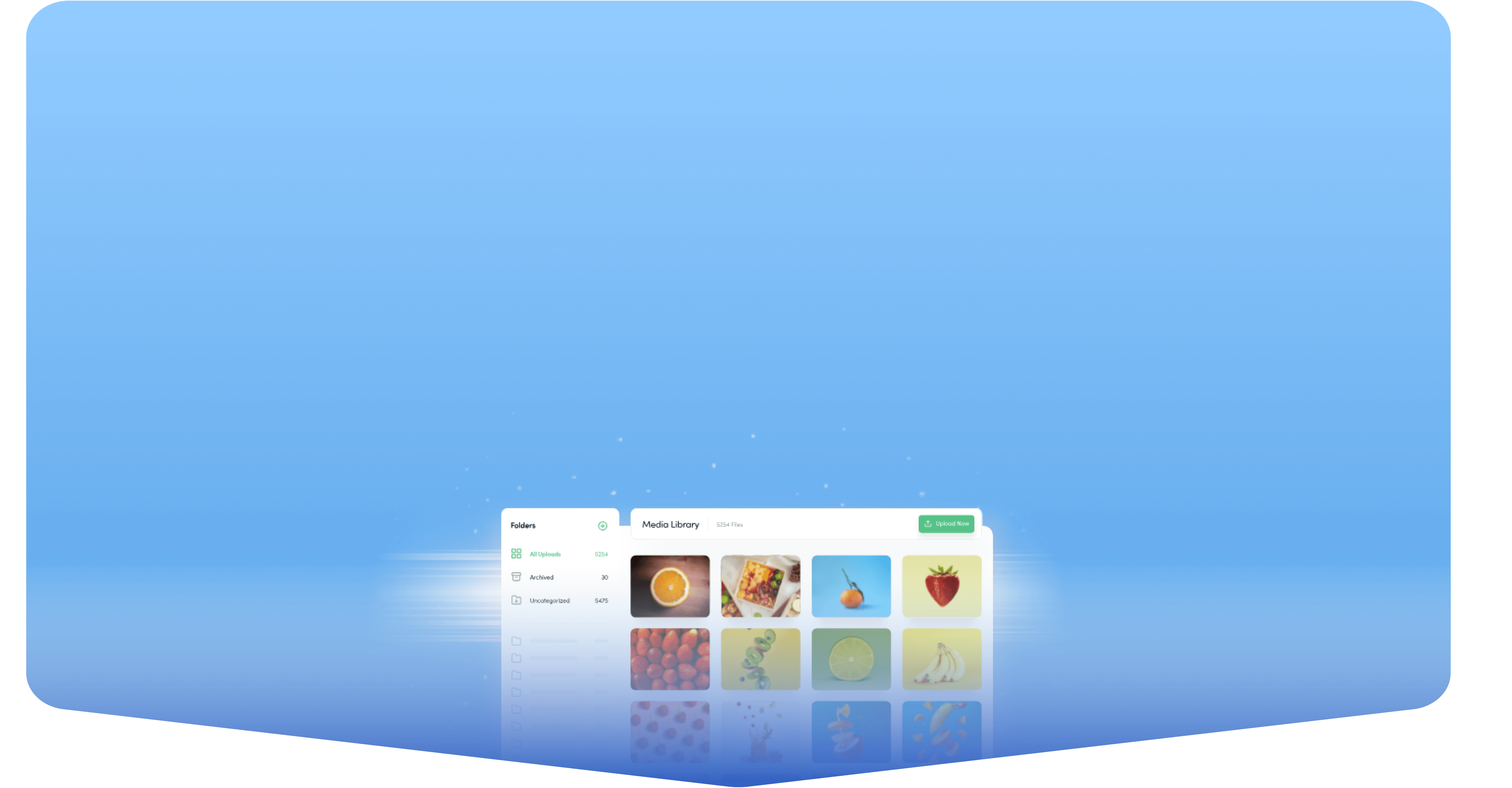
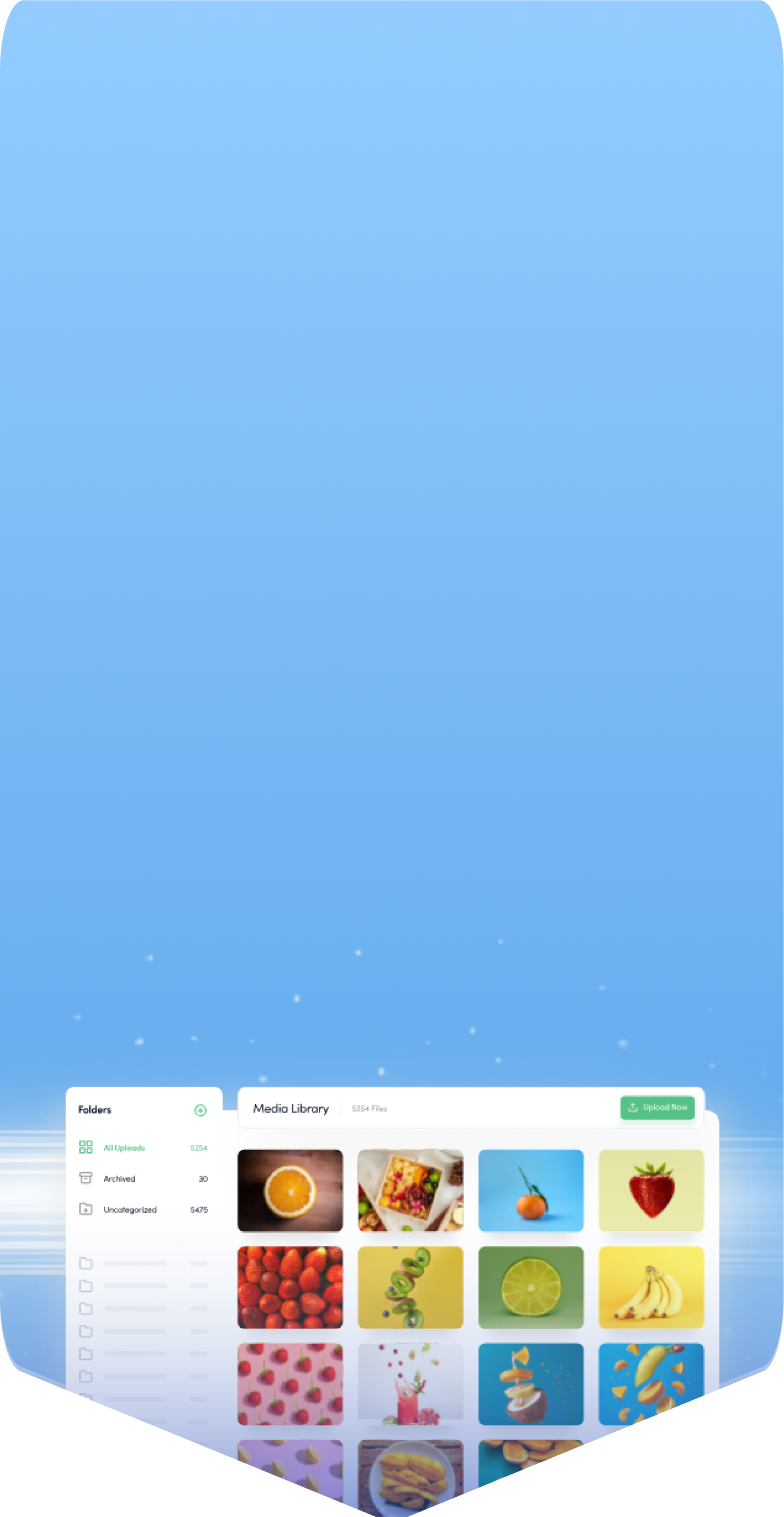
Powerful social media management software
14-day free trial - No credit card required.
